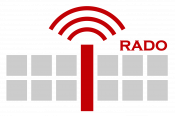HELENA – HERA LIDAR ENGINEERING MODEL ALTIMETER aimed to develop a lidar engineering model (EM) altimeter for current and future ESA AIM missions. The project was primarily focused on the development of an altimeter for the HERA mission. The HELENA design was based on a Laser Landing Altimeter Engineering Model developed by EFACEC, Portugal, within the framework of an ESA project. The laser source of this altimeter was a compact, low-power-consumption microchip laser emitting 1.5 μm light pulses. This laser technology enabled compact rangefinder designs.
The EM altimeter had a mass below 1.4 kg, dimensions of 12 cm x 15 cm x 10 cm, and was designed to measure distances up to 3 km. The main design requirements for HELENA were a measurement range from 14 km to 500 m, an accuracy of 0.5 m, and a total mass below 1.5 kg. The project included various activities related to the design, manufacturing, testing, verification, and validation of the engineering model.
Consortium: EFACEC Portugal, EFACEC Romania, INOE Romania, and ALMILAR Portugal.
About HERA (adapted summary from ESA official website)
Hera – named after the Greek goddess of marriage – was conceived as a candidate ESA mission to become humankind’s first probe to rendezvous with a binary asteroid system, a class of objects making up around 15% of all known asteroids. Hera represented the European contribution to a joint international double-spacecraft mission.
The NASA component, called the Double Asteroid Redirection Test (DART), was scheduled to collide with the smaller body of the binary asteroid system in 2022. Hera was intended to follow with a detailed post-impact survey, turning the large-scale experiment into a scientifically understood and repeatable planetary defence method.
Set for launch in 2024, Hera was expected to travel to the Didymos system, consisting of a 780 m main asteroid orbited by a 160 m moon, informally called Didymoon. Hera’s focus was to be on this moonlet, performing high-resolution visual, laser, and radio science mapping to build detailed models of its surface and interior.
By the time Hera would have reached Didymos in 2026, Didymoon would have become the first Solar System object whose orbit was measurably altered by human intervention. However, Earth-based observatories observing from a minimum distance of 10 million km were limited by visibility and dust. Their estimates carried significant uncertainty, especially concerning the momentum transferred and the mass and crater morphology.
Hera was designed to provide these missing details—measuring the moonlet’s mass, its post-impact orbit, and mapping the crater and nearby surface. These data would have allowed scientists to validate or refine impact modeling at asteroid scale and confirm the feasibility of planetary defence via kinetic impact.
Hera and DART were part of the international Asteroid Impact Deflection Assessment (AIDA) collaboration. While both missions were valuable independently, their scientific and technological returns were significantly enhanced when combined, delivering a strong message about the importance of international cooperation in planetary defence.
more information can be found here

